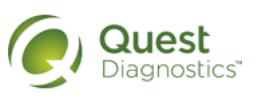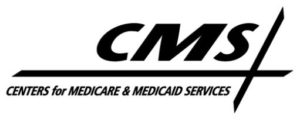- More than half of adults misuse medications, study finds (washingtonpost.com)
More than half of adults and 44 percent of children who were drug-tested by a national clinical laboratory last year misused their prescription medications, according to a study...by Quest Diagnostics...Misuse of medications can mean that patients were either taking too much, too little or none of their medications. It also can mean test results showed they were using other drugs that had not been prescribed, including illicit drugs -- as 45 percent of adults were doing...The rate of misuse identified by the study might skew higher than what would be found in the general U.S. population. Some patients were tested because their health providers determined there was a "high probability" of them mismanaging medications...The study also identified the drugs most often misused by patients depending on their age: amphetamines for youth 17 and under, but benzodiazepines and anti-anxiety medications for adults 25 and older, followed by opioid painkillers.
- 2016 national health spend to surpass $10K per person, total $2.7 trillion by 2025 (drugstorenews.com)
Between 2015 and 2025, according a new article in Health Affairs, growth in U.S. health spending is projected to increase about 5.8% on average — a number that surpasses growth in the gross domestic product by 1.3 percentage points. And in 2016...the...national health spending per capita will surpass $10,000 for the first time...Despite the cost per capita, aggregate national spending growth, Medicaid spending growth is expected to slow this year, to 5.3% from an average of 10.8% in 2014-2015, with an expected from in prescription spending growth to 4.9% from the 17.7% growth seen in 2015. Private payers will also see steady low spending growth of 4.9%, down from 5.1% in 2015. Medicare, on the other hand, is expected to see its spending growth rise this year to 5.2%, an increase from the 4.6% growth it saw last year...The report expects prescription drugs to have a smaller impact on health spending in the next 10 years than they did in 2014 and 2015, which it attributes to an expected drop in the number of approved new drugs, and the anticipated increase in availability of biosimilars.
- Infection experts warn of more U.S. superbug cases in coming months (reuters.com)
After two confirmed U.S. cases of a superbug that thwarts a last-resort antibiotic, infectious disease experts say they expect more cases in coming months because the bacterial gene (mcr-1) behind it is likely far more widespread than previously believed...Army scientists...reported finding E. coli bacteria that harbor a gene which renders the antibiotic colistin useless...The mcr-1 superbug has been identified over the past six months in farm animals and people in about 20 countries...Health officials fear the mcr-1 gene, carried by a highly mobile piece of DNA called a plasmid, will soon be found in bacteria already resistant to all or virtually all other types of antibiotics, potentially making infections untreatable...Within the next two to three years, it's going to be fairly routine for infections to occur in the United States for which we have no (effective) drugs available...mcr-1 will find its way into carbapenem-resistant bacteria…the resulting virtually impervious bacterium would likely spread slowly inside the United States because CRE themselves are not yet widespread in the country, giving drugmakers some time to create new antibiotics...
- Drug company-sponsored meals tied to more prescriptions (reuters.com)
Doctors who received even one free meal from a pharmaceutical salesperson were more likely than others to prescribe the drug being promoted, even when a generic equivalent was available, according to a new study...Each year in the U.S., $73 billion is spent on brand name drugs for which there is an equivalent generic available, and patients pay for $24 billion of that amount themselves...The brand name drugs and the generics are "so similar that there’s no benefit," from using the brand name versions...doctors who received even one sponsored meal from one of the pharmaceutical companies were more likely to prescribe the target drug over a generic alternative, compared to doctors who did not receive sponsored meals. As the number of meals and meal value increased, relative prescribing rates also increased...It’s not clear from this study whether receiving meals caused doctors to change their prescribing patterns, but "humans are very responsive to gifts...
- Medicare safeguard overwhelmed by pricey drugs (toledoblade.com)
A safeguard for Medicare beneficiaries has become a way for drugmakers to get paid billions of dollars for pricey medications at taxpayer expense, government numbers show...The cost of Medicare’s “catastrophic” prescription coverage jumped by 85 percent in three years, from $27.7 billion in 2013 to $51.3 billion in 2015...Out of some 2,750 drugs covered by Medicare’s Part D benefit, two pills for hepatitis C infection — Harvoni (ledipasvir/sofosbuvir) and Sovaldi (sofosbuvir)— accounted for nearly $7.5 billion in catastrophic drug costs in 2015...The pharmaceutical industry questions the numbers, saying they overstate costs because they don’t factor in manufacturer rebates. However, rebates are not publicly disclosed...Medicare’s catastrophic coverage was originally designed to protect seniors with multiple chronic conditions from the cumulatively high costs of taking many different pills. Beneficiaries pay 5 percent after they have spent $4,850 of their own money. With some drugs now costing more than $1,000 per pill, that threshold can be crossed quickly...
- Report says U.S. could save billions by getting diabetes patients to take their meds (fiercepharma.com)IMS Health Study: Low Levels of Adherence and Persistence Remain Barriers to Reducing the Costs of Diabetes Complications (imshealth.com)
Worldwide, less than half of Type 2 diabetes patients are taking their medicines in an "optimal" manner, according to a new report, leaving plenty of room for improvement for stakeholders seeking to reduce the billions of dollars associated with poor drug adherence...the IMS Institute for Healthcare Informatics said "sub-optimal" drug adherence is resulting in a "significant economic and societal burden" plus "avoidable" disease complications for patients...less than 40% of patients around the world are fully complying with their treatment instructions...ready to listen to the suggestions are health officials who've been seeking ways to pay for new, groundbreaking medicines without breaking the bank. Cutting down on avoidable costs would seem to make an approachable target in that effort...
- Drug maker is warned over missing study about child opioids use (statnews.com)
...one drug maker has failed to provide the Food and Drug Administration with a required study about the effect its powerful painkiller might have on teenagers...At issue is Xartemis XR (oxycodone/acetaminophen), which Mallinckrodt Pharmaceuticals received regulatory approval to sell two years ago. At the time, the company was also required to conduct a so-called post marketing study to determine its safety in youngsters between 12 and 17 years old…as of June 24, the company blew past a March 31 deadline for submitting its pediatric assessment. The drug maker also failed to respond to an April 25 "noncompliance" letter for which the FDA provided a new 45-day deadline to either submit the data or request an extension...The assessment was required under the Pediatric Research Equity Act...What happens if the company fails to comply and submit the data to the FDA? According to federal law, the agency could determine that Xartemis XR is misbranded. That would not lead to a product withdrawal, but the FDA could pursue an injunction or seizure proceedings...
- How Buprenorphine Implants Help People Fight Opioid Addiction (forbes.com)Implant for Opioid Dependence (req subscription) (jama.jamanetwork.com)
Poor medication adherence can lead to reduced treatment benefits, even death in some cases. Implants are being used by some medical professionals to increase the likelihood of patients “following the doctor’s orders.” Specifically, some clinicians are using these devices in individuals with an addiction to opioids...Even though buprenorphine can be used to treat opioid addiction, its efficacy is limited by the potential lack of adherence to daily, sublingual doses. To...increase...compliance among patients undergoing buprenorphine treatment...the FDA approved the first buprenorphine implant for the treatment of opioid dependence...Called Probuphine, the treatment provides a low-level dose of buprenorphine for six months...This treatment option may also be considered an effective relapse prevention tool. Icahn School of Medicine at Mount Sinai researchers found...
- Diabetes sales rocket toward $60B, with Novo and Lilly’s GLP-1s first in line for growth (fiercepharma.com)
Two sides of one coin will keep diabetes drug sales growing--big time--through 2025. The disease is growing fast around the world, and treatment arbiters advise a more aggressive approach to blood-sugar control...Combine those two drivers, and diabetes will account for almost $60 billion in 2025 sales across 9 major global markets, GlobalData analysts say in a recent report...But this rising tide of sales won’t lift all treatments equally...Best positioned for growth? GLP-1 drugs, they say, which are poised to grow by 12.4% annually through the next decade...Right now, only a small number of patients are actually hitting blood glucose targets of 7% to 7.5% A1C levels...Doctors are pushing harder to hit those goals, so the number of people needing a second or third add-on drug will mushroom over the next 10 years. "[W]e’ll treat these people fairly aggressively" to get to those A1C levels..."[W]e are not going to tolerate people after 8.5% and 9% like we used to."...despite public health campaigns and awareness campaigns, people will "continue to overeat and under-exercise and they are going to see their weight continue to go up, and therefore their need for more medications will go up with it,"...
- DEA Releases 2016 National Heroin Threat Assessment Summary (dea.gov)Drug Enforcement Administration released the 2016 National Heroin Threat Assessment Summary – Updated...The report outlines the expanding public health crisis afflicting America due to the use and abuse of heroin and other opioid drugs. Some key facts: (dea.gov)
Drug Enforcement Administration released the 2016 National Heroin Threat Assessment Summary – Updated...The report outlines the expanding public health crisis afflicting America due to the use and abuse of heroin and other opioid drugs. Some key facts:
- The number of people reporting current heroin use nearly tripled between 2007 (161,000) and 2014 (435,000).
- Deaths due to synthetic opioids, such as fentanyl and its analogues, increased 79 percent from 2013 to 2014.
- Deaths involving heroin more than tripled between 2010 (3,036) and 2014 (10,574) – a rate faster than other illicit drugs.










